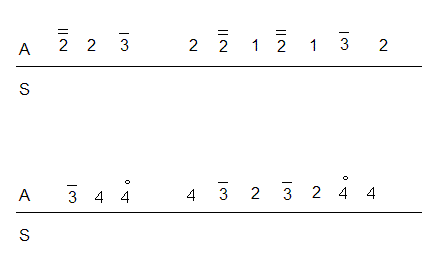|
How to play chromatically on a regular bluesharp.
Playing chromatically on regular bluesharps implies
to master the overblows. Overblows are a sort of bend where
the sound is produced by the reed opposed to the breath. For
example the player blows in the 6th hole, blocks the blow reed
and makes the draw reed vibrate. It necessitate a good adjustement
of the reeds offset, a good attack to block the blow reed and
a proper mouth shape to activate draw reed.
For a full description of this technique, refer
to Tinus's great site: http://www.overblow.com.
It is important to keep in mind that the overblows
don't sound very well and are difficult to play perfectly in
tune, even when the technique is mastered. This poses no real
problem when the overblow falls on a weak time or when played
at high tempo but makes sounding good quite difficult on slow
songs.
The most useful overblows for the blues player
are on the 1rst and 4th (minor third in 1rst position), 5th
(flat fifth in 1rst position) and 6th hole (minor third in 2nd
position or flat 7th in first position).
The following tablature describes a riff containing
a minor third played in second position and first position.

Here is the blues scale in first position:

The 1rst hole overblow:
The 1rst hole overblow is particulary difficult
to obtain. In our opinion the best alternative is to valve the
2nd blow and use a valved blow bend to obtain the minor third
in first position.
Remark:
Even if the overblow technique is quite difficult
to master, it worths working on it as it helps mastering every
kind of bend and shaping a good sound on regular notes.
Laurent Vigouroux
|